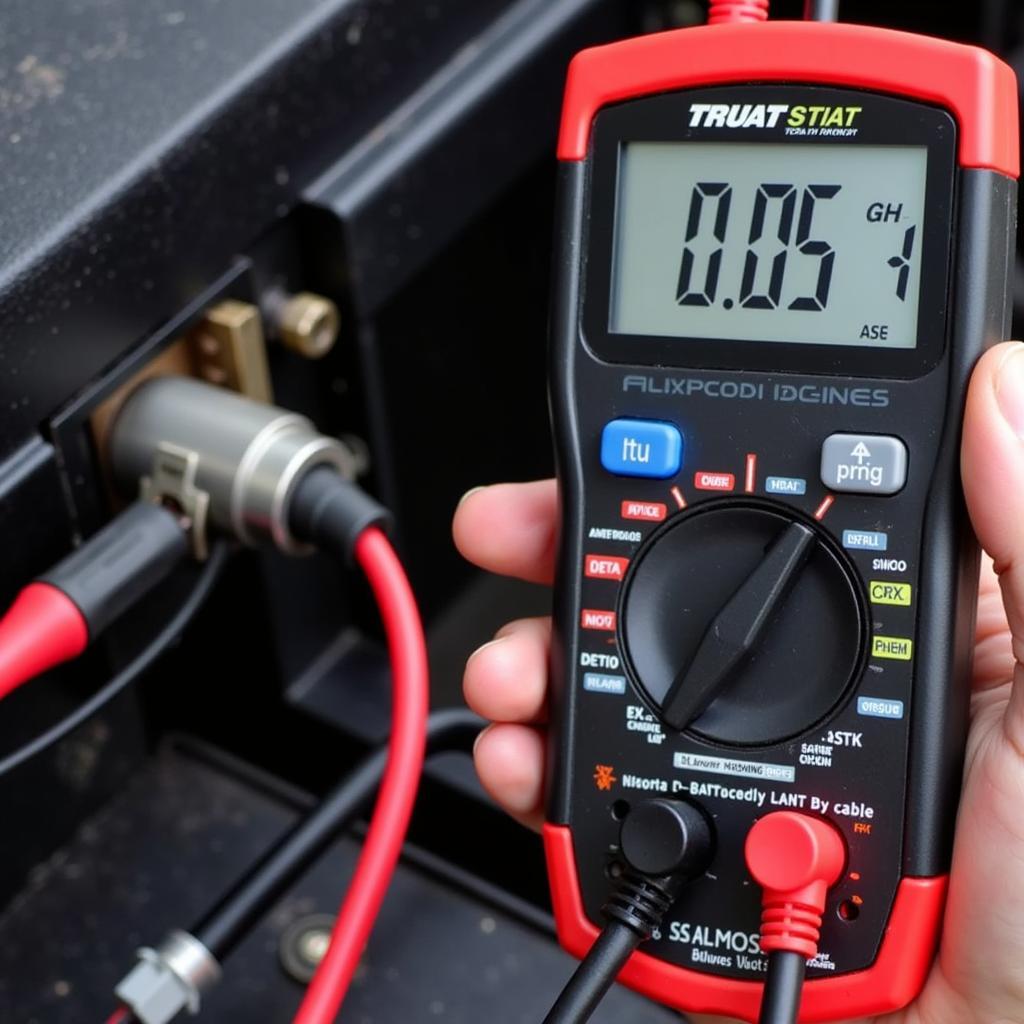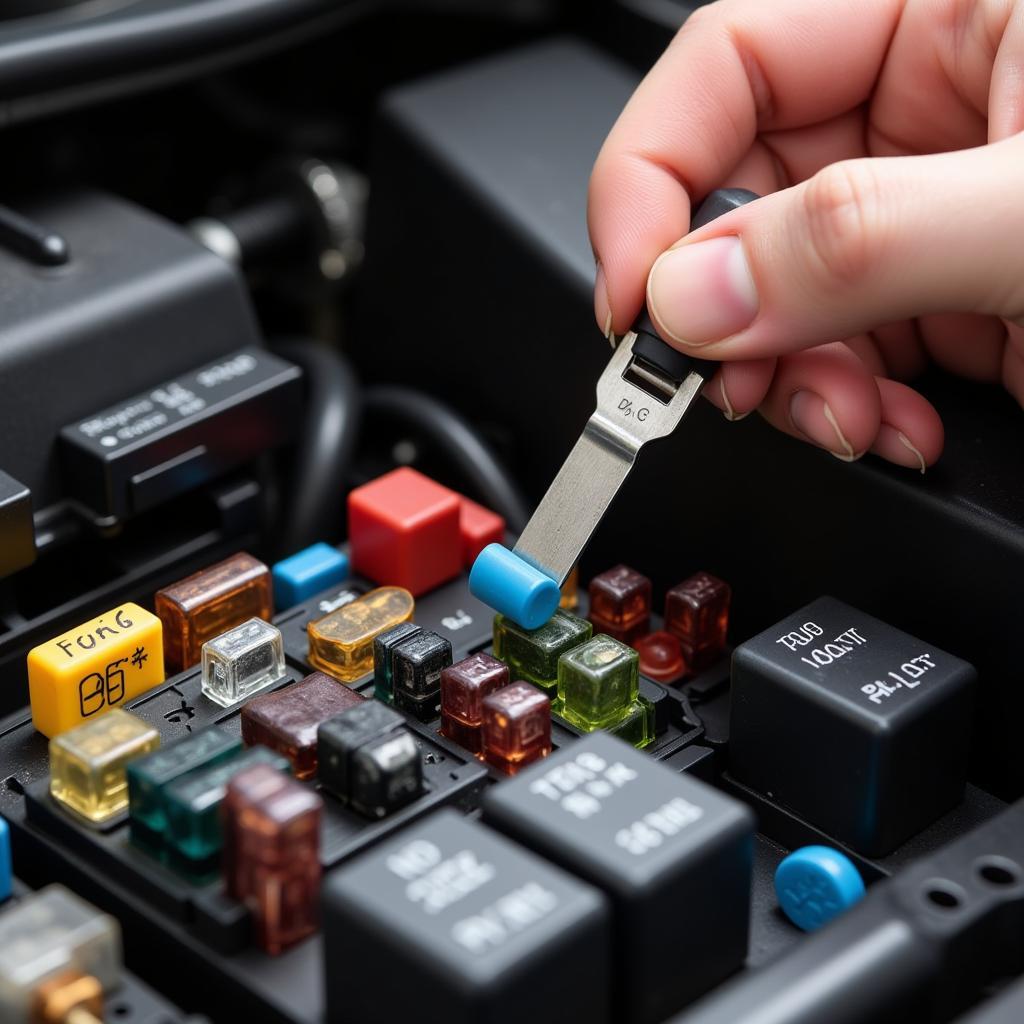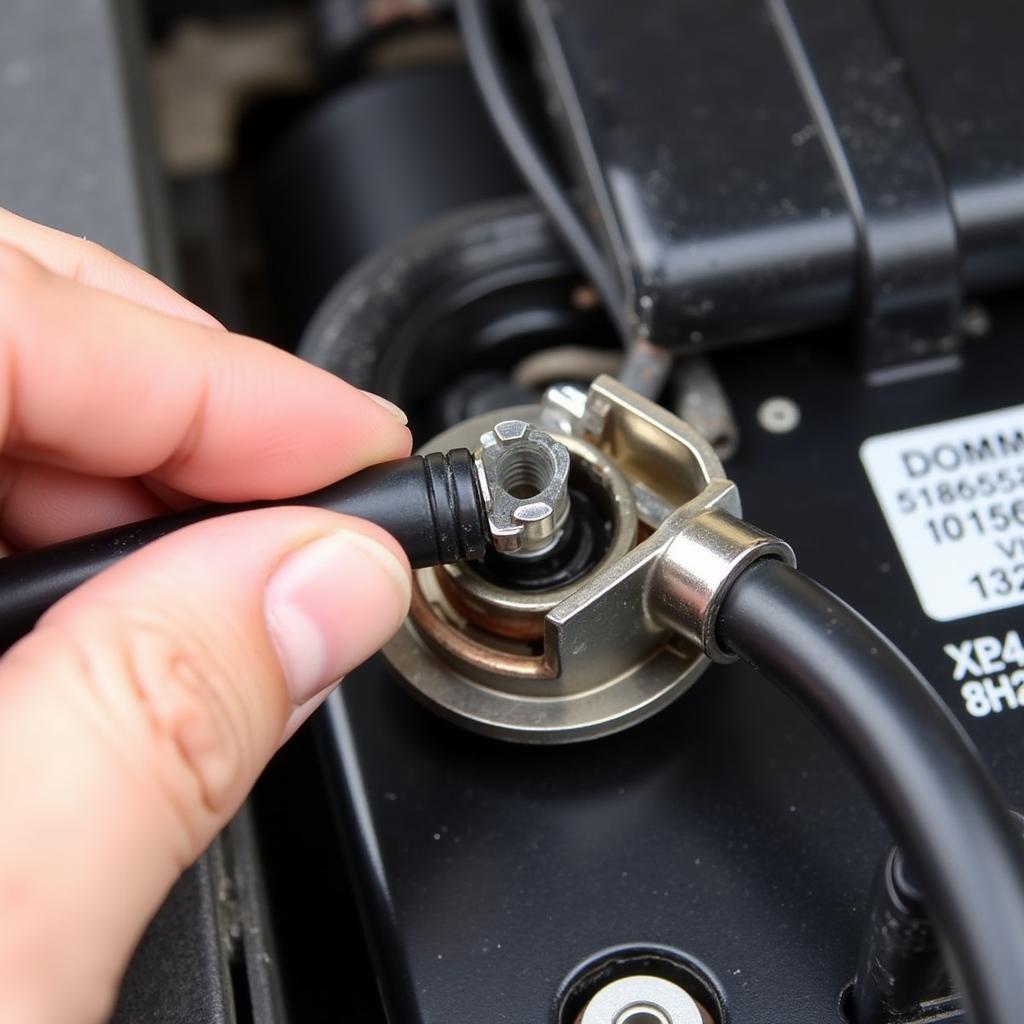A dead car battery is frustrating, especially when it seems to happen out of the blue. Often, the culprit is a parasitic battery drain, silently siphoning power even when your car is off. This article will guide you through the process of checking for a parasitic battery drain, helping you pinpoint the source and get back on the road.
Understanding Parasitic Battery Drains
Parasitic battery drains occur when electrical components continue to draw power after the ignition is switched off. While some drain is normal (for example, to maintain the clock and security system), excessive drain can lead to a dead battery. These drains can be tricky to diagnose, often stemming from faulty wiring, malfunctioning components, or even aftermarket accessories improperly installed.
How to Check for a Parasitic Battery Drain: A Step-by-Step Guide
Follow these steps to identify a parasitic draw:
- Gather your tools: You’ll need a multimeter (preferably a digital one with a min/max function), some basic hand tools, and potentially a wiring diagram for your specific vehicle.
- Prepare your vehicle: Park your car in a safe, well-ventilated area, ensuring the engine is off, lights are off, and all doors are closed.
- Access the battery: Open the hood and locate your car battery.
- Set up your multimeter: Set your multimeter to the DC amps setting (usually denoted by “A” or “mA”). The range should be high enough to handle potential drain, typically 10-20 amps.
- Disconnect the negative battery cable: Carefully disconnect the negative (black) cable from the battery terminal. Important: Be mindful of any jewelry or metallic objects that could come into contact with the battery terminals.
- Connect the multimeter: Connect the red lead of the multimeter to the negative battery terminal and the black lead to the disconnected negative battery cable. This places the multimeter in series with the circuit, allowing you to measure the current flow.
- Observe the reading: The multimeter will display the current draw. A small reading (less than 50 milliamps or 0.05 amps) is generally acceptable. A higher reading indicates a potential parasitic drain.
 Multimeter Reading Showing Parasitic Drain
Multimeter Reading Showing Parasitic Drain - Isolate the culprit: If the reading is high, begin systematically removing fuses one at a time. After removing each fuse, observe the multimeter reading. If the reading drops significantly, you’ve identified the circuit containing the drain. Consult your vehicle’s wiring diagram to determine which components are on that circuit.
- Test individual components: Once you’ve narrowed down the circuit, you can test individual components within that circuit. This might involve disconnecting components or checking for shorts in the wiring.
 Checking Car Fuse for Parasitic Drain
Checking Car Fuse for Parasitic Drain - Reconnect everything: After identifying and resolving the parasitic drain, reinstall the fuses and reconnect the negative battery cable.
Common Causes of Parasitic Battery Drain
Some common causes include faulty alternators, interior lights left on, glove box lights stuck on, faulty door latch switches, and aftermarket accessories like stereos or alarms.
“A common mistake people make is assuming a new battery will solve the problem. If there’s a parasitic drain, even a new battery will eventually die,” says automotive electrical expert, Michael Stevens, ASE Certified Master Technician.
What if the Drain is Intermittent?
Intermittent drains can be especially challenging to diagnose. These drains may only occur under specific conditions, making them difficult to pinpoint. Using a multimeter with a min/max function can help capture these intermittent spikes in current draw.
Preventing Parasitic Battery Drains
Regularly checking your battery’s voltage, ensuring proper installation of aftermarket accessories, and addressing any electrical issues promptly can help prevent future parasitic drains.
“Investing in a battery disconnect switch can also be a useful preventative measure, especially if you don’t drive your car regularly,” adds Stevens.
Conclusion
Checking for a parasitic battery drain is a crucial skill for any car owner. By following these steps and using the right tools, you can diagnose and resolve the issue, preventing future headaches and keeping your car on the road. Don’t let a parasitic battery drain leave you stranded. Take control of your car’s electrical system and ensure your battery remains healthy.  Reconnecting Negative Battery Cable
Reconnecting Negative Battery Cable
FAQ
- What is a normal parasitic battery drain? A normal drain is generally less than 50 milliamps (0.05 amps).
- What tools do I need to check for a parasitic drain? You’ll need a multimeter, basic hand tools, and potentially a wiring diagram.
- What are the common causes of a parasitic drain? Faulty alternators, interior lights, glove box lights, door latch switches, and aftermarket accessories.
- What if I can’t find the drain? Consult a qualified automotive electrician for further diagnosis.
- How can I prevent parasitic drains? Regular battery checks, proper installation of accessories, and addressing electrical issues promptly.
- Is it safe to disconnect the battery myself? Yes, but be careful not to touch both terminals simultaneously with metal objects.
- Can a parasitic drain damage my car? Yes, a continuous drain can shorten the lifespan of your battery and potentially damage other electrical components.

